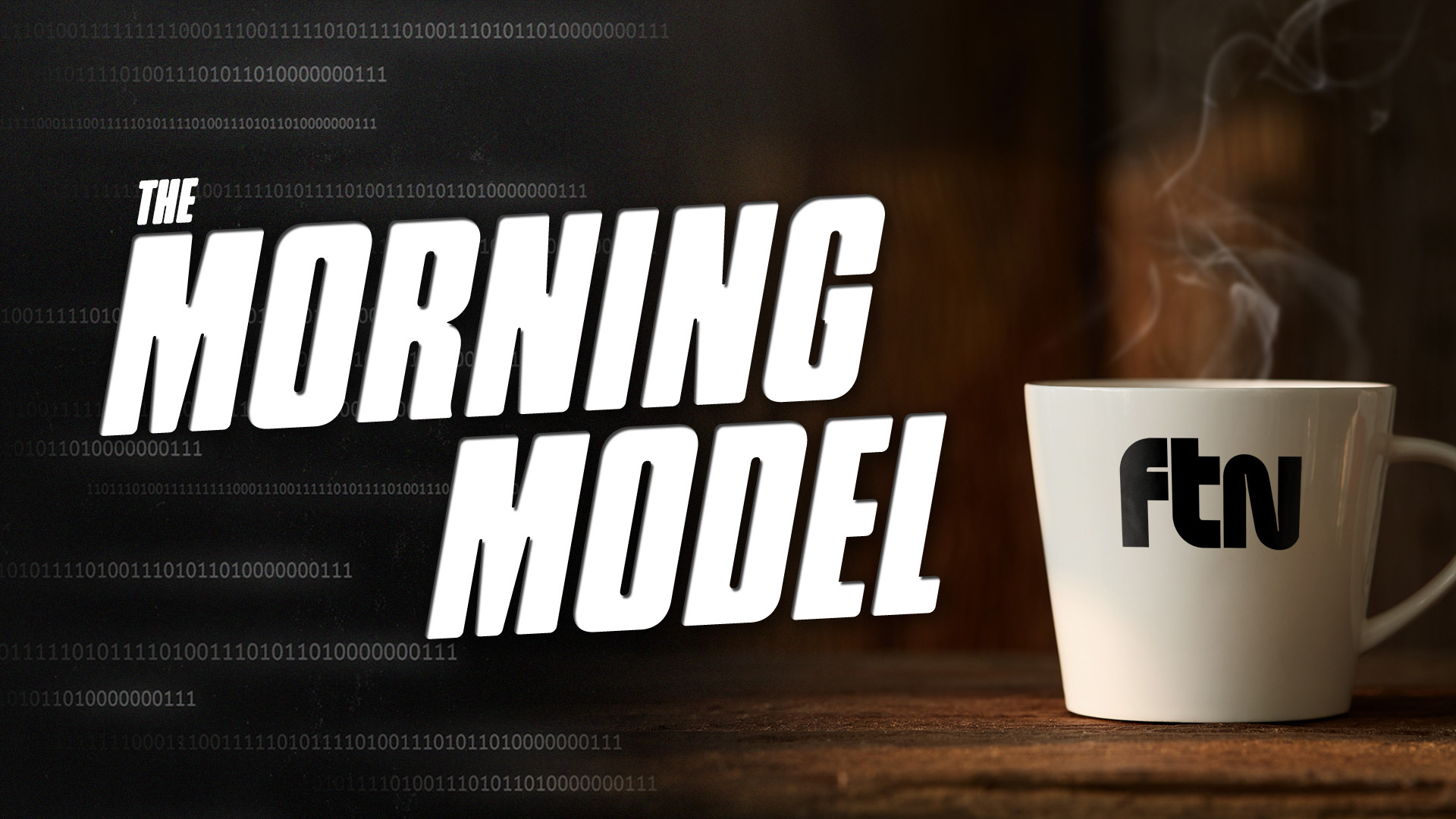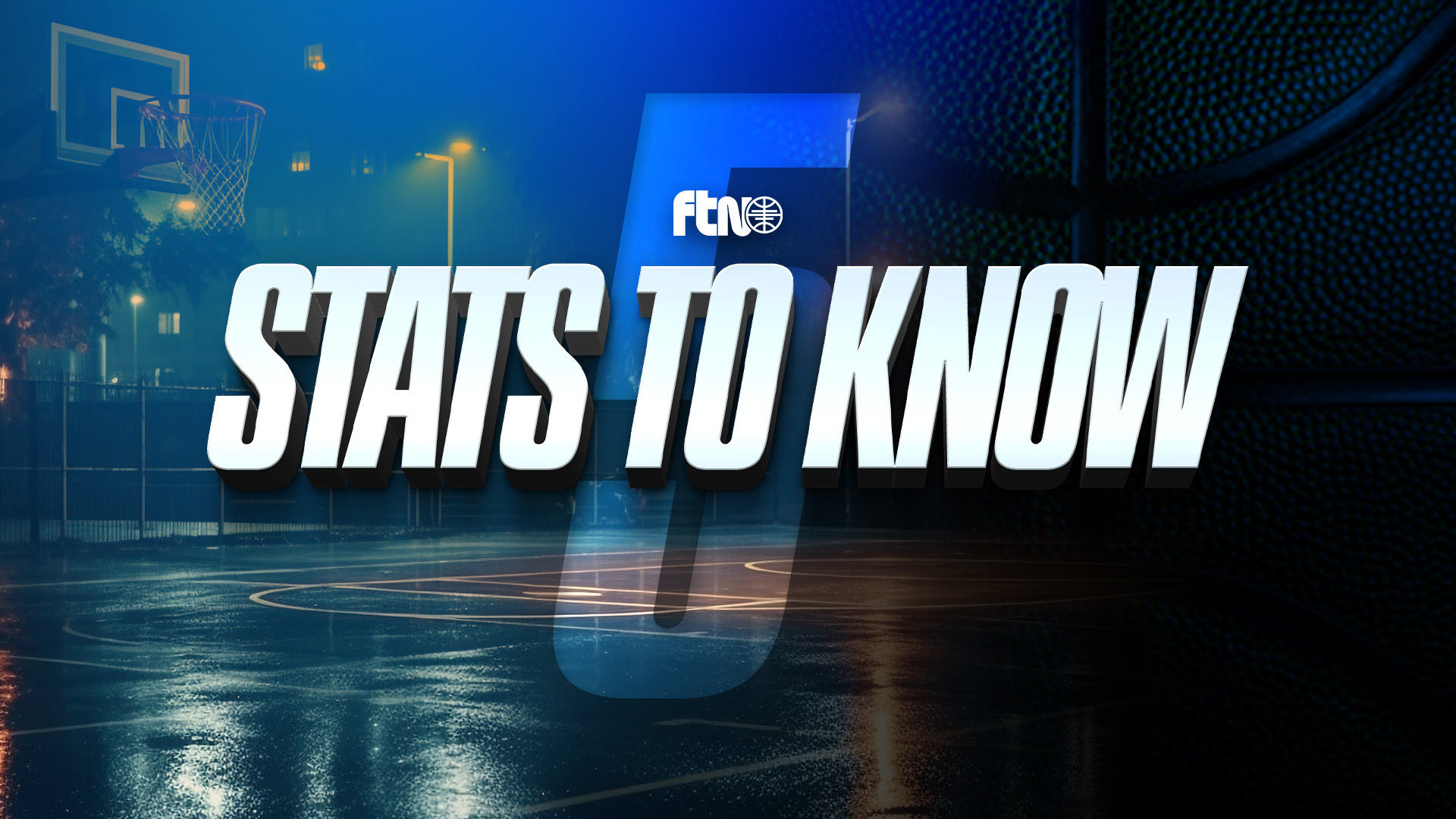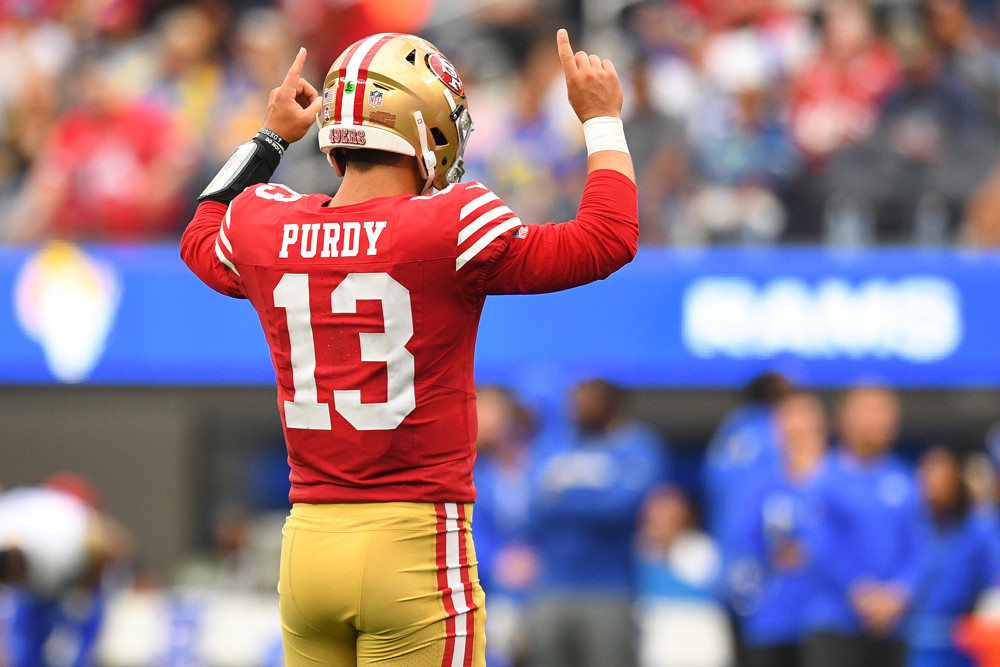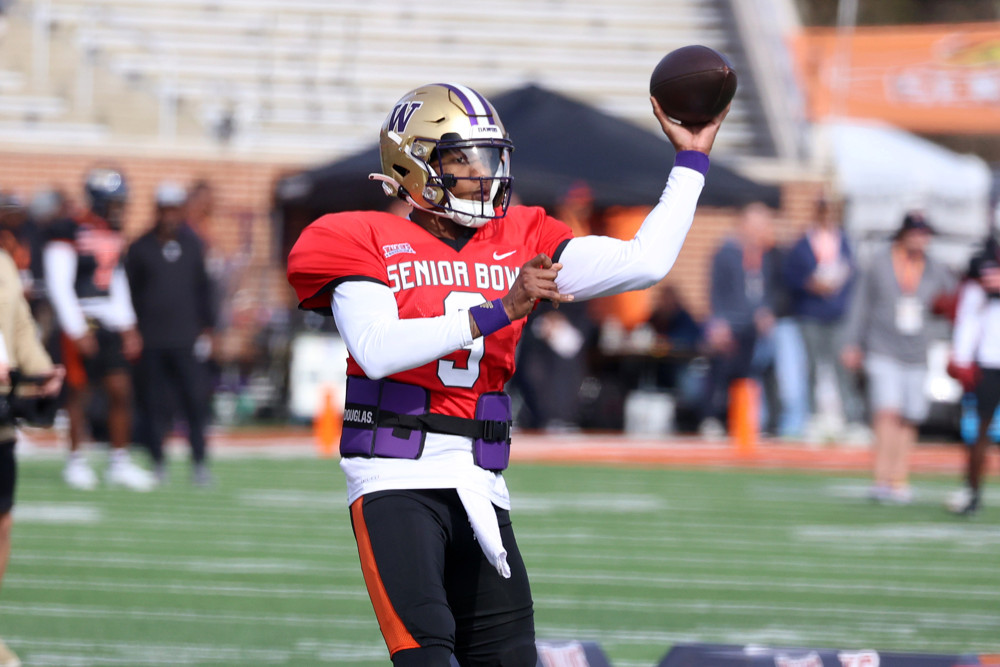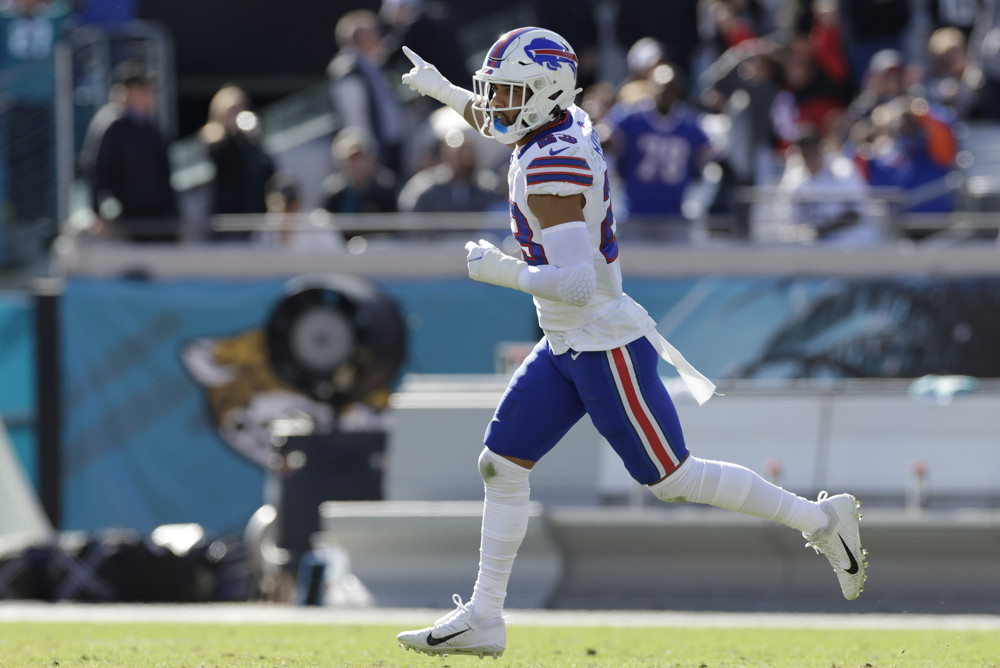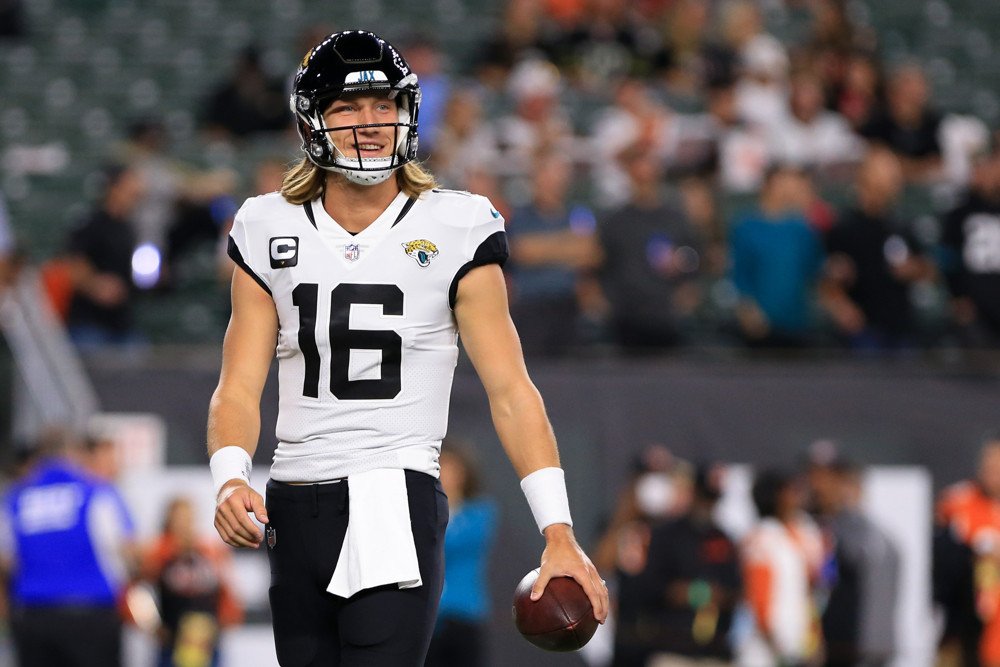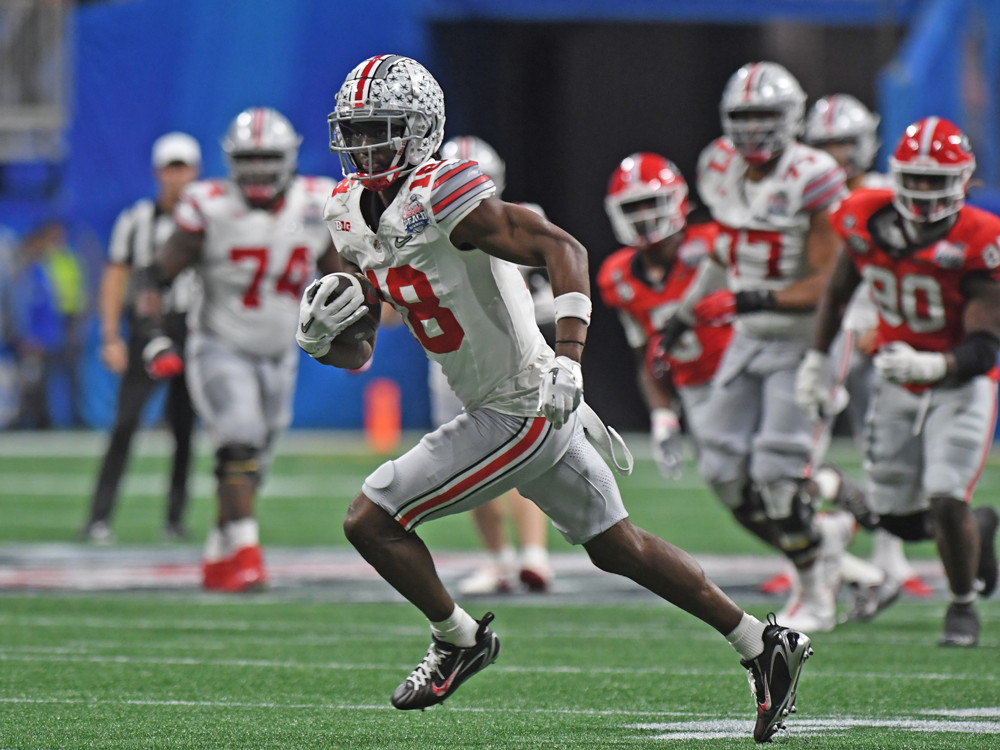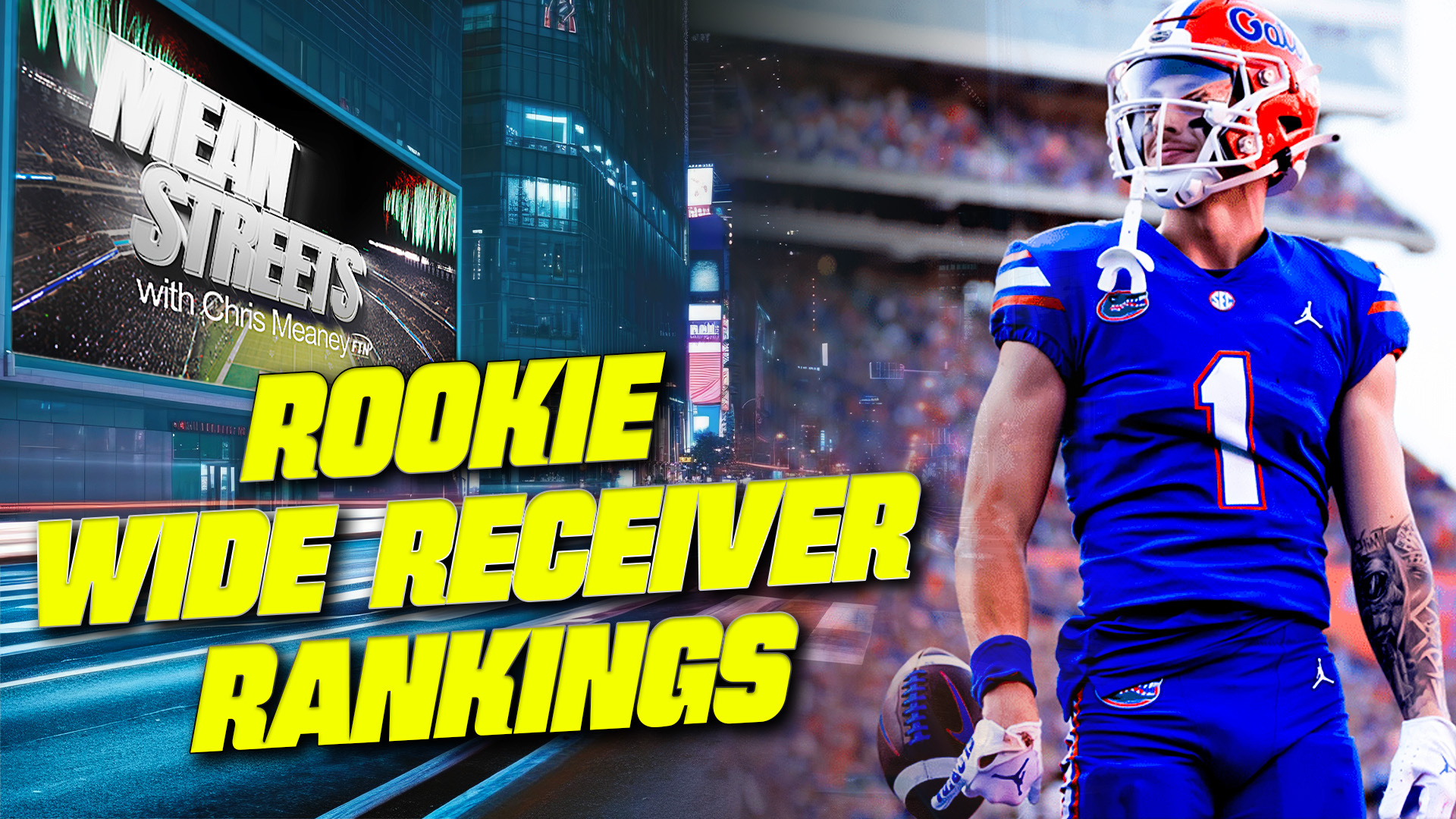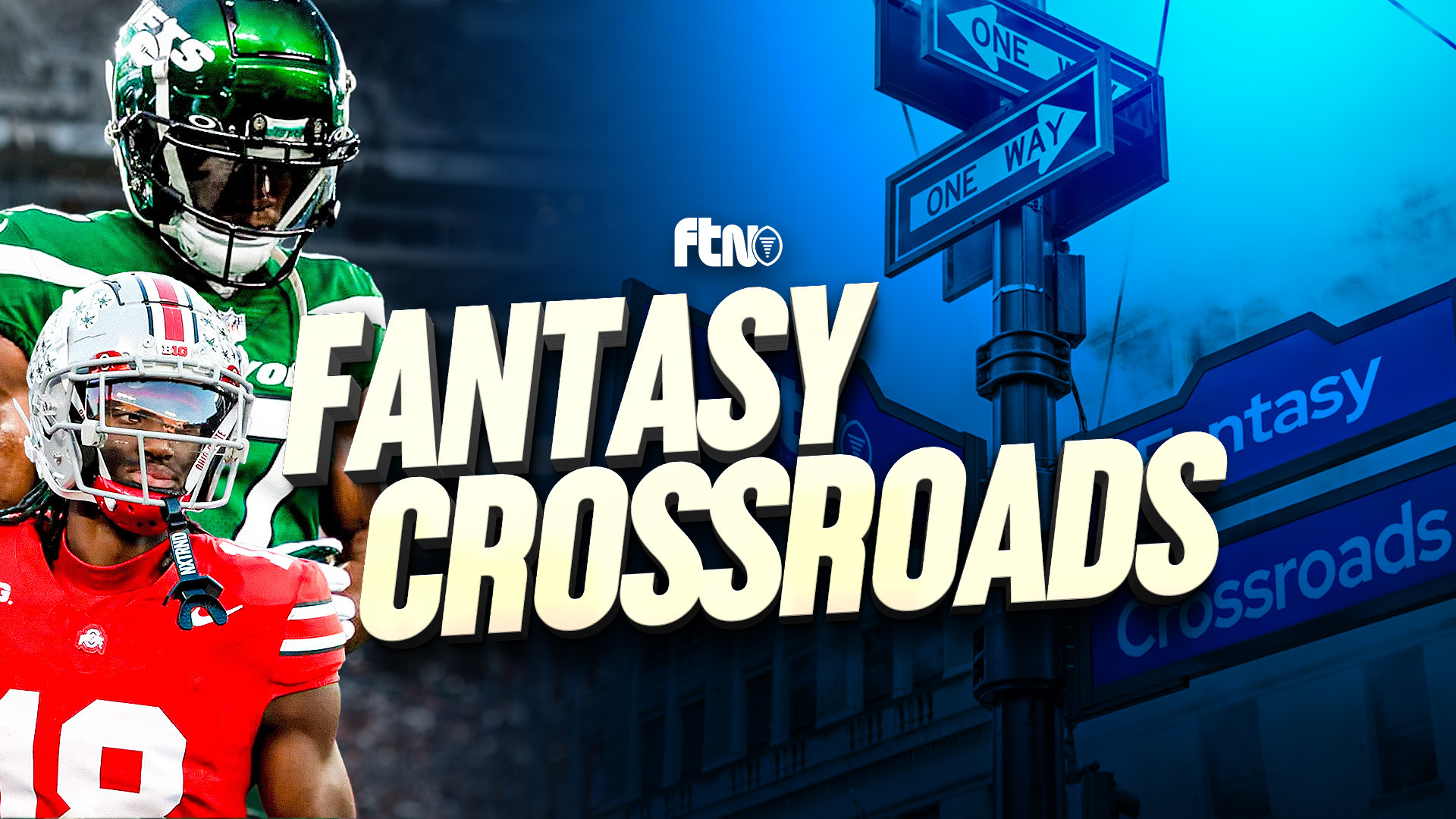
(Welcome to the FTN Fantasy NFL Coaching & Coordinator Series. All summer, our Adam Pfeifer will be looking at every team’s coaching staff through a fantasy football lens, to see what means what and how a fantasy manager can capitalize on it. Today: The Denver Broncos.)
I bet the Denver Broncos would love to pretend like the 2022 season didn’t even happen.
After an exciting offseason filled with promise, Denver went on to win just five games, while rolling out the worst offense in all of football. Sure, they had a handful of players hurt but overall, it was a disastrous season for the Broncos. For the second straight offseason, things are changing in a huge way in Denver.
Denver Broncos Head Coach: Sean Payton
Saints head coach from 2006-2021
After watching the Broncos offense last season, apparently Sean Payton felt it was time to come out of retirement and revamp this Denver unit. Payton retired in 2021 after spending 15 seasons as the head coach of the New Orleans Saints. We’ll discuss his scheme and offensive philosophy in a little bit, but Payton certainly has his work cut out for him. In 2022, the Broncos, pretty hyped with Russell Wilson joining the team, weren’t just an underwhelming offense — they were legitimately the worst offense in all of football.
Denver’s 16.9 points per game were the fewest in the NFL this past season. They also ranked 30th in points (1.44), 28th in yards (27.6) and 29th in plays (5.6) per drive, scoring points on just 28.6% of their total drives, the second-worst rate in the league. Penalties also hurt this offense, as they were called for more delay of game penalties than any other team in the league. It was a rough first (and only) season for Nathaniel Hackett, who wanted to run a West Coast style offense that prioritizes intermediate passes over the middle of the field, as well as screen passes. And while Wilson certainly didn’t play well, it is fair to wonder how well he fits with that style of offense. During his time in Seattle, Wilson stretched the field vertically on the boundaries, while getting outside of the pocket. Play-action also wasn’t a huge part of this offense, as just 21.3% of his dropbacks came from play-action, which ranked 31st among qualified signal callers. Over the course of his final four seasons with the Seahawks, Wilson’s average play-action dropback rate hovered around the 29% mark. Wilson is at his best when he is using play-action to set up the deep pass, or when rolling out, especially considering he hasn’t targeted the middle of the field nearly as often as many other quarterbacks.

It was far too late, but during the final few games of the season, Denver finally began to put Wilson in more advantageous situations. After moving on from Hackett in late December, Denver’s offense showed some signs of life to end the season. In the final two games, then interim head coach Jerry Rosburg and offensive coordinator Justin Outten ran the offense, with Outten calling most of the plays. Although it was only a two-game sample size, Wilson arguably played his best football of the season, likely due to the fact that he was more comfortable with the changes in the Broncos offense. According to FTN Data, Wilson sported just an 18% play-action rate during Weeks 1-16, while his pass rate on throws outside the pocket was just under 16%. However, in Weeks 17 and 18 with Outten calling plays, Wilson’s play-action rate skyrocketed to 34%, while a healthy 24% of his pass attempts came from outside of the pocket. In an offense that suited him better, Wilson showed flashes down the stretch, completing 61% of his passes, throwing for over 500 yards and averaging over 23 fantasy points per game over his final two contests. There was simply more of an emphasis on Wilson’s mobility, as he also had eight designed rushing attempts during the final two games.
| Weeks | Play-Action Rate | Passing Rate Outside The Pocket |
| 1-16 | 18% | 15.8% |
| 17-18 | 34% | 24.0% |
Payton talked about how he liked what he saw from Wilson and this offense toward the end of last season, so what should we expect his offense to look like in 2023?
The Passing Game
Payton’s tenure in New Orleans was a tale of two teams, essentially.
For a while, the Saints had one of the worst defenses in all of football, forcing Payton to throw the ball all over the field. With a below average defense and a prime Drew Brees, the Saints were very much a pass-first team, ranking top-seven in the league in passing play percentage every season from 2013-2017. However, the Saints defense emerged into a top-10 unit, while Brees’ arm started to decline, leading to a more run-oriented offense from the Saints towards the end of Payton’s tenure. From 2017-2021, the Saints ranked 13th, fifth, 20th, fifth and third in rushing play percentage. But more on the rushing attack later on.
Payton’s passing scheme has been pretty straightforward over the years. He and Brees were a perfect duo, as Payton dials up fantastic short/intermediate concepts, while Brees is one of the best quarterbacks of all time in general, but especially in that style of offense. From 2015 to 2020, Brees ranked 15th, third, 19th, fourth, 11th and 10th in percentage of passes 0-9 yards down the field. The ball would get out of Brees’ hands tremendously fast, as he averaged 2.45 seconds to throw during that same span, among the fastest times in the league. That makes this a pretty interesting fit with Wilson, who tends to hold onto the football and look for the explosive play 30 yards down the sideline. I’m just so excited to see how much of those Saints’ offenses is incorporated into the Broncos’ system with Payton calling plays. Because although Payton has a clear scheme he’s deployed over the years, he’s also had pretty consistent personnel for most of his tenure in New Orleans. Brees played all but one season, while the Saints featured their offense through the running backs. And once Brees’ arm strength started to fall off, there was even more emphasis on the short passing game. The Broncos, however, have Wilson, who has been arguably the best deep passer in all of football over the last six or seven years. He also presents way more mobility than Brees had, which was featured more during the aforementioned two-game stretch to end the 2023 campaign.
My best guess is that we see some sort of combination of what Payton did in New Orleans and what the Broncos’ offense looked like to end last year. That would mean plenty of short passes, screen passes to the running backs, while also implementing deep shots from play-action or with Wilson outside of the pocket. It would certainly be new for a Payton-led offense to feature more play-action, however. From 2012-2020, Brees used play-action on just 19.3% of his dropbacks, while the Saints as a team used play-action on less than 10% of their total dropbacks during Payton’s tenure. I think Payton dials up way more play-action than he did during his time with the Saints, especially since the personnel is different, while we’ve seen Wilson thrive off deep play-action passes for years.
It’ll also be interesting to see how much of a focal point the screen game will be. I thought we’d see a huge uptick in screen passes with Hackett last season, but Wilson ended the year slightly below league average in screen pass dropback rate (10.2%). Of course, the Saints were the best screen team in football for much of Payton’s tenure, though the offense was also tailor-made for that style. New Orleans always had elite pass-catching running backs, while Brees’ arm strength wasn’t anything to write home about. From 2010-2020, Brees ranked inside the top-seven quarterbacks in screen pass attempts five times. Wilson won’t be throwing screen passes at the same rate as Brees, but he could easily be above league average in 2023, especially given how involved running backs have been in Payton’s offenses.
Target Shares
It is no secret that running backs were heavily involved in the Saints passing game while Payton was there. From 2013 to 2021, Saints running backs accounted for an average of 27.8% of the team’s targets, while there were only two seasons during that span where the running back target share was south of 25%. And it wasn’t solely because Brees wasn’t attacking the field vertically, as running backs still accounted for 27.6% of the Saints targets in 2021, the highest rate in the league. For most of his career, Wilson has not targeted the running back position very often, but that changed a bit in his first year in Denver last year, sporting a career-high running back target rate of nearly 24%. The Broncos dealt with injuries at wide receiver, which may have boosted that target share, but we should absolutely expect Javonte Williams and Samaje Perine to be very busy this season.
As for the wide receiver position, I fully expect Jerry Jeudy to pick up where he left off toward the end of 2022 and operate as Denver’s clear WR1 in Payton’s offense. Payton’s offenses in New Orleans often featured a slot wide receiver working the middle of the field. Whether it was Marques Colston, who averaged 122.1 targets, 80.8 receptions and 1,105 receiving yards in his six healthy seasons 2006-2012. Or Michael Thomas, who was one of the most productive wideouts in football from 2016 to 2019, averaging 150.5 targets, 117.5 receptions and 1,378 receiving yards during that span. Of course, Brees made a living targeting the middle of the field, especially crossing routes, which made up 16% of his passes in 2019, for instance. Wilson has not targeted the middle of the field very often, but it simply might be more of a focal point in Payton’s offense. And if that is the case, Jeudy will surely benefit, especially since that isn’t really Courtland Sutton or Tim Patrick’s game.
 Multiple Running Backs
Multiple Running Backs
Between Payton’s track record of giving multiple running backs work and Javonte Williams coming back from a serious injury, I would be stunned if this backfield isn’t some sort of committee in 2023. From 2016 to 2020, the Saints’ No. 2 running back has averaged 173 touches per season. Just think about how many Saints running backs have been fantasy relevant over the years. Obviously Alvin Kamara and Mark Ingram were very good. but there was also Pierre Thomas, Darren Sproles, Reggie Bush, Chris Ivory and Tim Hightower. There was even a season back in 2008 where Thomas, Bush and Deuce McAllister all eclipsed 100 rushing attempts. Even if Williams wasn’t coming off an ACL tear, this would still be somewhat of a two-headed backfield.
Offensive Coordinator: Joe Lombardi
LAC OC from 2021-2022
Lombardi spent plenty of seasons alongside Payton, as he was the Saints offensive assistant 2007-2008 and the quarterbacks coach 2009-2013 and 2016-2020. This offense is going to mostly come from Payton, but Lombardi has plenty of experience working alongside him during their time in New Orleans, making this an ideal pairing.
Pace
Unlike some of the other teams in the AFC West, I would not expect the Broncos to play incredibly fast this season. During Payton’s final three seasons with the Saints, New Orleans averaged just 28.81 seconds per snap, the fourth-slowest pace in football during that span. And in that stretch, their 2.5% no-huddle rate was the third-lowest rate in the league.
 Defensive Coordinator: Vance Joseph
Defensive Coordinator: Vance Joseph
Cardinals DC from 2019-2022
After spending four years in Arizona, Joseph returns to Denver, where he spent the 2017 and 2018 seasons as the head coach. We can expect a ton of man coverage and aggressive blitzes from the Broncos with Joseph running the defense. The Cardinals ranked third, fourth, third and second in blitz rate during Joseph’s four seasons there, sporting an overall blitz rate of 37.2% during that span. Arizona has also been one of the more man-heavy defenses in the league over the last four years, so expect Denver to run more man coverage in 2023. They ranked bottom-eight in man coverage last season, but they have the personnel to run more man coverage, especially with star defensive back Pat Surtain. Per FTN Fantasy’s Shadow Index, Surtain was used in shadow coverage seven different times last year. I’d guess, at the very least, he repeats that this season.
 Fantasy Football Takeaways
Fantasy Football Takeaways
After months of hype surrounding Russell Wilson and the Broncos passing attack last offseason, it turns out it was just that — hype. Wilson had the worst season of his career in 2022, tossing just 16 touchdowns to 11 interceptions. He ranked 24th in fantasy points per dropback (0.42), scoring one or fewer touchdowns in 11 games. The late-season two-game sample was at least a little encouraging, as Wilson completed 61% of his passes, throwing for over 500 yards and averaging over 23 fantasy points per game during that span. As we discussed, the change in offense was more comfortable for Wilson, as his play-action rate climbed by 16%, while his passing rate outside of the pocket increased by around nine percent. I’m not saying Wilson will return to top-10 status among fantasy signal callers but should look more like the quarterback we saw in Seattle in 2023.
Even though Denver’s offense was a disaster, Javonte Williams was well on his way to a breakout campaign. The usage in the passing game was insane, as Williams caught 16 passes in about three and a half games. Unfortunately, his season ended early after tearing his ACL in Week 4, which makes projecting him for 2023 pretty difficult. Williams has been part of a timeshare in both college and the NFL, splitting touches with Michael Carter at North Carolina and Melvin Gordon with the Broncos. Between the injury and the arrival of Sean Payton, expect that to continue this season, which makes Williams a relatively risky selection in fantasy drafts at the moment.
With that in consideration, Samaje Perine becomes a very strong running back to target in the middle rounds of your drafts. For starters, Williams could miss a few games to start the season, paving the way for Perine to handle 15-20 touches per game in an offense that is very fantasy-friendly for running backs. From 2013 to 2021 with the Saints, running backs accounted for an average of 27.8% of the team’s targets, while there were only two seasons during that span where the running back target share was south of 25%. Perine, meanwhile, is an underrated pass-catching running back, as he ranked 15th at the position in yards per route run last year (1.34) and 19th in yards per reception (7.6). There will be plenty of games where Perine is the starting running back for Denver but even when Williams is healthy, both running backs will get work. As mentioned, Saints’ No. 2 backs averaged 173 touches over Payton’s last few years. I especially love Perine as a prime zero-RB candidate.

Jerry Jeudy struggled with efficiency the first two seasons of his career but enjoyed a mini-breakout last year, catching 67 passes for 972 yards and six touchdowns. He really showed his ceiling Weeks 13-18, averaging 7.5 targets, 6.1 receptions, 87 receiving yards and 18.5 PPR points per contest. Jeudy was the WR6 in fantasy during that span and continued to demonstrate tremendous route-running skills, giving him the ability to win against man coverage. In fact, according to FTN Data, Jeudy averaged 3.61 yards per route run against man coverage, the third-highest mark among qualified wideouts. And while he operated from the slot about 55% of the time, Jeudy was effective when asked to play on the outside, catching 15-of-17 targets for 149 yards and three touchdowns in Weeks 14 and 15 with Courtland Sutton sidelined. In those games, Jeudy lined up out wide over 81% of the time. He’ll be the focal point of Payton’s passing attack and is a fantasy WR3 with top-24 upside.
Courtland Sutton, meanwhile, has struggled to build off his exciting 2019 campaign. I expected Sutton to really benefit from Wilson’s arrival, but the overall offense seemingly held everyone back, as he caught just 64 passes for 829 yards and a pair of touchdowns. Sutton will remain the vertical target on the perimeter, which will lead to plenty of splash plays, especially if there is more of an emphasis on deep shots off play-action. However, Payton’s overall offense certainly favors Jeudy. Sutton is a high-end WR4 for me.
Rookie tight end Greg Dulcich made his debut in Week 6 last year, taking over the lead role at the position. Dulcich averaged around 75% of the snaps in 10 games last season, averaging 5.5 targets per game. His 10.6-yard aDOT ranked third among all tight ends, while his 7.8 yards before the catch per reception was tied for third at the position, presenting Dulcich with some upside as a late-round tight end.












